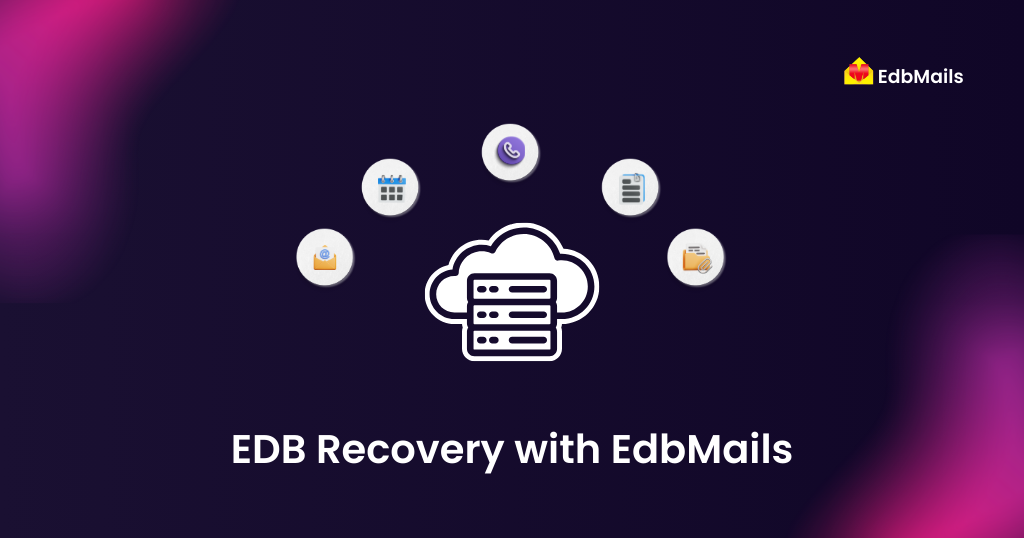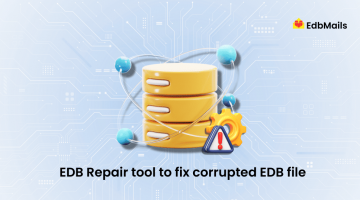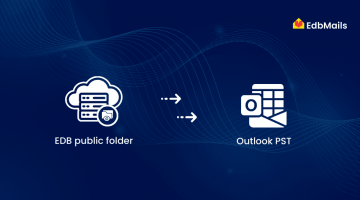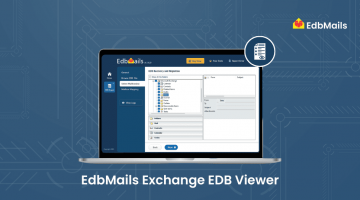There is hardly any Exchange administrator unfamiliar with the Exchange Database file (EDB). This file serves as the core repository for all mailbox data processed by an Exchange Server. Each database can contain multiple user mailboxes and public folders, storing emails, contacts, calendars, tasks, and more. As Microsoft defines it, “A mailbox database is a unit of granularity where mailboxes are created and stored.” These mailbox databases are saved in the .edb file format.

Prior to Exchange Server 2007, Exchange used two separate files .edb and .stm to manage its mailbox storage. The .edb file held MAPI-based messages and attachments, while the .stm file stored internet content in its raw form. Starting with Exchange 2007, Microsoft consolidated these two into a single .edb file to streamline architecture and reduce disk I/O operations. This change not only simplified database management but also improved performance and reliability.
Analyze EDB and Convert It to an Accessible Format
When dealing with Exchange database (.EDB) files, whether for recovery, migration, or mailbox extraction, accessibility is often the first challenge. If you need to examine the contents, retrieve mailboxes, or convert the data into Outlook-compatible PST files, EdbMails offers a streamlined and dependable solution.
The software supports all major Exchange versions, including 2016, 2013, 2010, 2007, and 2003, and enables you to effortlessly access both healthy and corrupted EDB files. EdbMails facilitates granular recovery and allows you to export individual mailboxes or entire databases to PST files, depending on your preference.
A key advantage of EdbMails is its ability to perform direct migrations to Office 365 or Live Exchange Server, without relying on Exchange Server log files or Active Directory connectivity.
Key Advantages of EDB Recovery with EdbMails
- Restore emails, contacts, calendars, tasks, journals, and attachments from corrupt or inaccessible EDB files without data loss
- Recover EDB files of any size while maintaining speed and accuracy.
- Choose specific mailboxes, folders, or individual items to export, saving time and storage space.
- Maintain the folder hierarchy, mailbox structure, and metadata exactly as in the source database.
- Works with all Exchange Server versions from 2003 to 2019.
- Migrate recovered data directly to Office 365 or Live Exchange without intermediate PST creation.
- Easy-to-use interface suitable for both technical experts and first-time users.
Forensic Recovery of Exchange Database
EdbMails offers a comprehensive forensic recovery solution capable of restoring critical mailbox data including emails, attachments, journals, contacts, calendar items, and more even from severely corrupted or inaccessible Exchange databases.
Database corruption can result from various causes such as dirty shutdowns, malware infections, hardware failures, or server crashes. Despite these challenges, EdbMails’ intuitive graphical interface simplifies the recovery process.
Simply load the damaged EDB file into the EdbMails interface, and the application will display all available mailboxes and their respective folder structures. Each item—along with its subject, sender/recipient details, body content, timestamps, and attachments—can be thoroughly reviewed and selectively exported to Outlook PST files for further analysis or archival.
Conclusion:
This article covers how EdbMails simplifies Exchange EDB recovery across versions 2003 to 2016. It enables you to open, analyze, and recover data from healthy or corrupt EDB files without needing log files or Active Directory. You can export mailboxes to PST or migrate directly to Office 365 and Live Exchange. With a user-friendly interface and forensic-level recovery, EdbMails handles even complex scenarios like server crashes or dirty shutdowns with ease.
See More
Guide for Smooth Exchange Migration to Office 365



